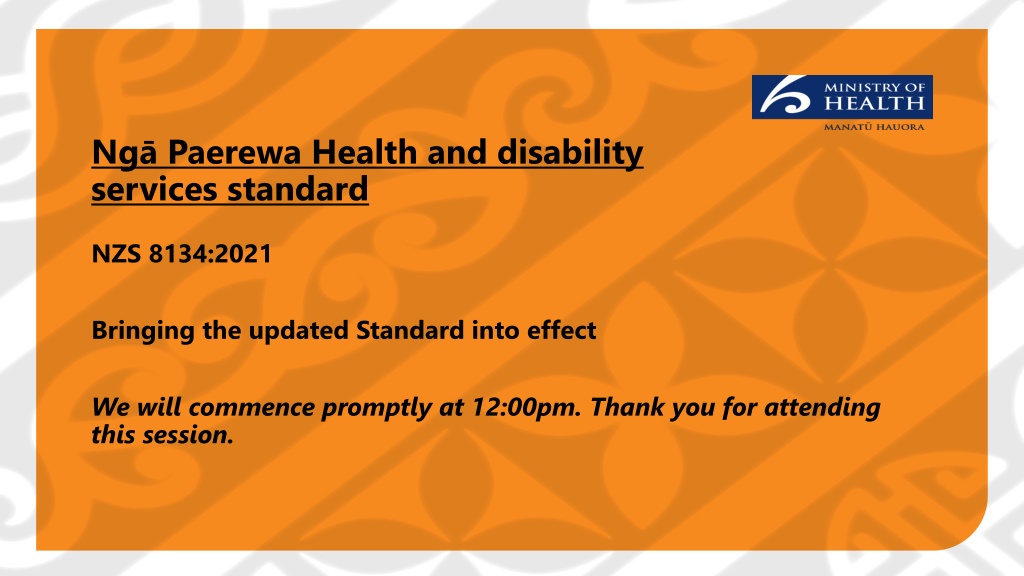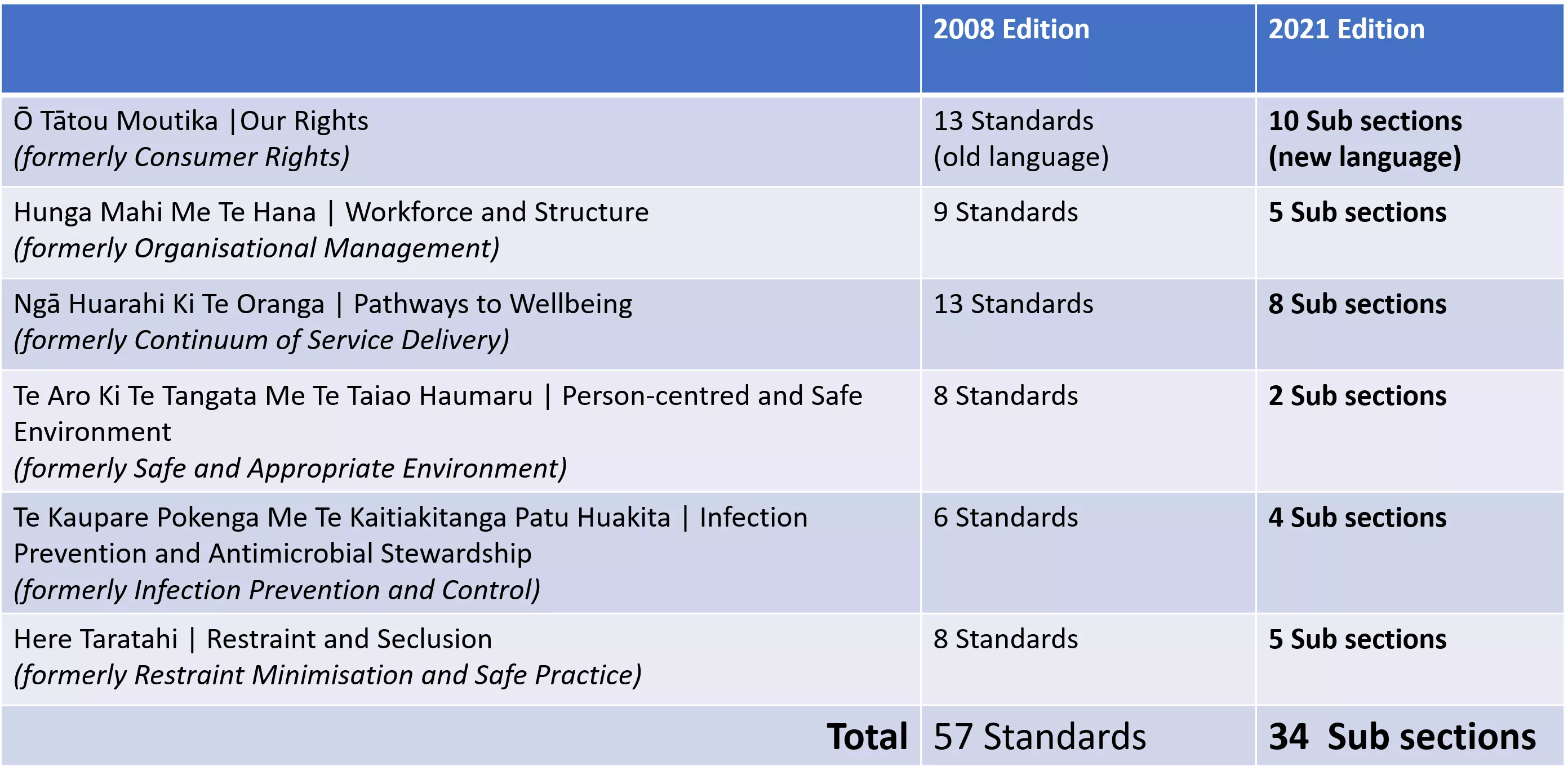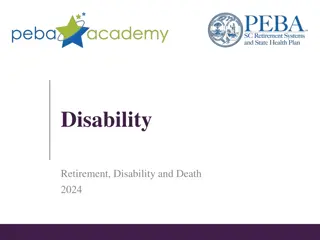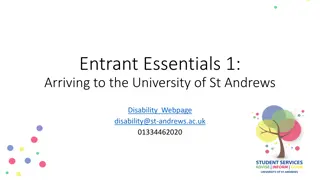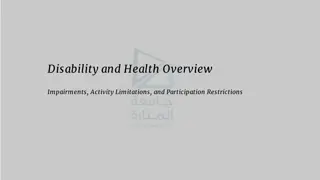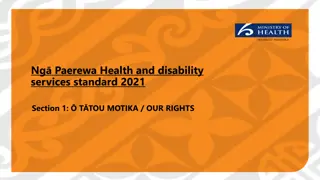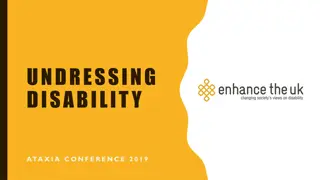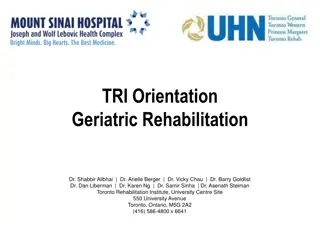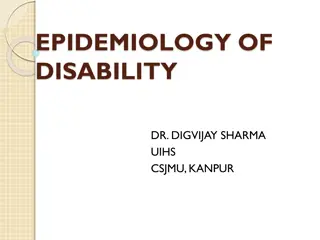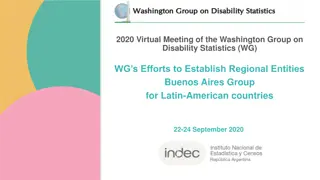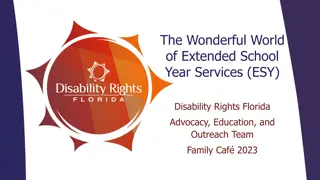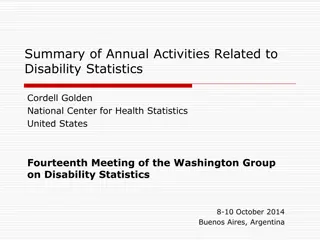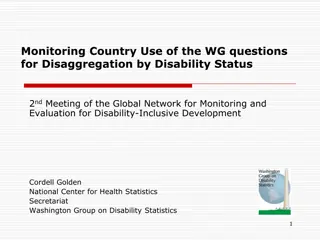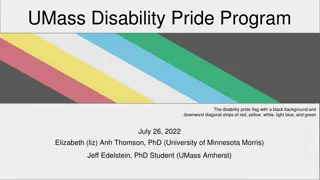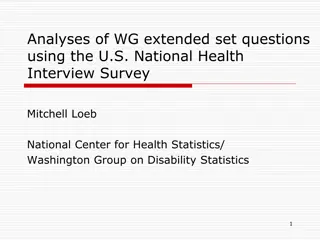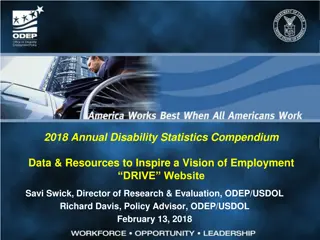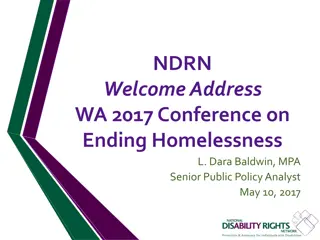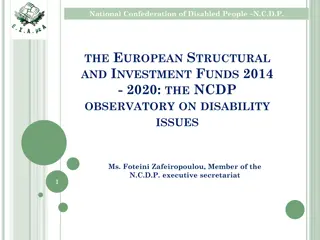Health and Disability Services Standard NZS 8134:2021 Update Overview
The session discusses the updated Health and Disability Services Standard NZS 8134:2021, highlighting changes from the 2008 edition, implementation details, and criteria application. The standard aims to enhance service quality and features key sections addressing rights, workforce, wellbeing pathways, safety environments, infection prevention, and more. Sector guidance and support for interpretation and implementation are emphasized to ensure compliance and quality improvement in service provision.
Download Presentation

Please find below an Image/Link to download the presentation.
The content on the website is provided AS IS for your information and personal use only. It may not be sold, licensed, or shared on other websites without obtaining consent from the author. Download presentation by click this link. If you encounter any issues during the download, it is possible that the publisher has removed the file from their server.
E N D
Presentation Transcript
Ng Paerewa Health and disability services standard NZS 8134:2021 Bringing the updated Standard into effect We will commence promptly at 12:00pm. Thank you for attending this session.
Manat Hauora Karakia Wh ia, wh ia, wh ia, Ng uaratanga o te Manat Hauora. Ko te manaakitanga Ko te kaitiakitanga Ko te whakapono Ko te k kiri ng tahi Kia tae atu t tou ki pae tata, ki pae tawhiti, ki Pae Ora. Kia t turu ka whakamaua kia t na, t na! Haumi e, hui e! T iki ! Let us jointly pursue the values of the Ministry of Health We take care of each other We create an environment for our people to thrive We work in good faith And we move forward together If we do this, we will lay hold of distant horizons and those near to us, and we will create a thriving future for all people
Nau mai haere mai Partnered with Standards NZ & Te Ap rangi Developed by the sector for the sector Involved over 300 representatives from the sector Principles based approach Introduced I know what it means for me statements Will come into effect 28 February 2022.
Standard Implementation Comparing the 2008 to the 2021 Standard 2008 Edition 2021 Edition T tou Moutika |Our Rights (formerly Consumer Rights) 13 Standards (old language) 10 Sub sections (new language) Hunga Mahi Me Te Hana | Workforce and Structure (formerly Organisational Management) 9 Standards 5 Sub sections Ng Huarahi Ki Te Oranga | Pathways to Wellbeing (formerly Continuum of Service Delivery) 13 Standards 8 Sub sections Te Aro Ki Te Tangata Me Te Taiao Haumaru | Person-centred and Safe Environment (formerly Safe and Appropriate Environment) 8 Standards 2 Sub sections Te Kaupare Pokenga Me Te Kaitiakitanga Patu Huakita | Infection Prevention and Antimicrobial Stewardship (formerly Infection Prevention and Control) 6 Standards 4 Sub sections Here Taratahi | Restraint and Seclusion (formerly Restraint Minimisation and Safe Practice) 8 Standards 5 Sub sections Total 57 Standards 34 Sub sections
Criteria application Not all criteria is applicable to all service types. Listed in the Sector Guidance document.
Sector Guidance Ministry website Support interpretation & implementation Live document Feedback from sector will inform updates
Mapping 2008 to 2021 (or gap analysis) HealthCERT has completed the official mapping of the 2008 Standards against the 2021 Standard. The mapping is categorised into three elements: 72% (148 of 204 criteria) directly map 10% (20 of 204) partially map 18% (36 of 204) do not map 1. Mapped criteria are explicit or intended in the 2008 Standards Partially new/Partially mapped criteria are not explicit in the 2008 Standards and/or have a new component added in the 2021 Standard criteria New/Unmapped 2. 3.
Mapping per service type Mapping per service type Residential Residential mental health mental health and addiction and addiction services services Abortion Abortion (Interim (Interim Standards ASC Standards ASC referencing) referencing) Residential Residential disability disability services services Fertility Fertility 8181:2007 8181:2007 HCSS HCSS 8158:2012 8158:2012 Hospitals Hospitals (public/private) (public/private) General Mapping General Mapping to NZS 8134: 2008 to NZS 8134: 2008 ARC ARC Maternity Maternity Hospice Hospice Total applicable Total applicable criteria criteria 179 172 146 187 185 199 163 182 157 204 Total mapped Total mapped criteria (%) criteria (%) 74% 74% 54% 54% 60% 60% 73% 73% 72% 72% 72% 72% 73% 73% 73% 73% 38% 38% 72% 72% Total partially Total partially new/partially new/partially mapped (%) mapped (%) 11% n/a n/a 10% 10% 11% 12% 12% n/a 10% Total new/not Total new/not mapped (%) mapped (%) 15% 46% 40% 17% 17% 17% 15% 15% 62% 18%
Section 1: TTOU MOTIKA OUR RIGHTS Outcome 1: People receive safe services of an appropriate standard that comply with consumer rights legislation. Services are provided in a manner that is respectful of people s rights, facilitates informed choice, minimises harm, and upholds cultural and individual values and beliefs. Sub section 1.1: Pae ora healthy futures (5 criteria) 1.2: Ola manuia of Pacific peoples in Aotearoa (5 criteria) 1.3: My rights during service delivery (5 criteria) 1.4: I am treated with respect (6 criteria) 1.5: I am protected from abuse (6 criteria) 1.6: Effective communication occurs (6 criteria) 1.7: I am informed and able to make choices (9 criteria) 1.8: I have the right to complain (5 criteria) 1.9: Health and wellbeing of children born as a result of, and people accessing, reproductive technology services (4 criteria) 1.10: Requirements of donation and surrogacy (5 criteria)
Section 2: HUNGA MAHI ME TE HANGANGA WORKFORCE AND STRUCTURE Outcome 2: People receive quality services through effective governance and a supported workforce. Sub section 2.1: Governance (11 criteria) 2.2: Quality and risk (8 criteria) 2.3: Service management (14 criteria) 2.4: Health care and support workers (7 criteria) 2.5: Information (3 criteria)
Section 3: NG HUARAHI KI TE ORANGA PATHWAYS TO WELLBEING Outcome 3: People participate in the development of their pathway to wellbeing, and receive timely assessment, followed by services that are planned, coordinated, and delivered in a manner that is tailored to their needs. Sub section 3.1: Entry and declining entry (6 criteria) 3.2: My pathway to wellbeing (7 criteria) 3.3: Individualised activities (4 criteria) 3.4: My medication (12 criteria) 3.5: Nutrition to support wellbeing (7 criteria) 3.6: Transition, transfer, and discharge (5 criteria) 3.7: Electroconvulsive therapy (4 criteria) 3.8: Obtaining and caring for gametes and embryos (8 criteria)
Section 4: TE ARO KI TE TANGATA ME TE TAIAO HAUMARU PERSON-CENTRED AND SAFE ENVIRONMENT Outcome 4: Health and disability services are provided in a safe environment appropriate to the age and needs of the people receiving services that facilitates independence and meets the needs of people with disabilities. Sub section 4.1: The facility (7 criteria) 4.2: Security of people and workforce (8 criteria)
Section 5: TE KAUPARE POKENGA ME TE KAITIAKITANGA PATU HUAKITA INFECTION PREVENTION AND ANTIMICROBIAL STEWARDSHIP Outcome 5: Health and disability service providers infection prevention (IP) and antimicrobial stewardship (AMS) strategies define a clear vision and purpose, with quality of care, welfare, and safety at the centre. The IP and AMS programmes are up to date and informed by evidence and are an expression of a strategy that seeks to maximise quality of care and minimise infection risk and adverse effects from antibiotic use, such as antimicrobial resistance. Sub section 5.1: Governance (4 criteria) 5.2: The infection prevention programme and implementation (13 criteria) 5.3: Antimicrobial stewardship programme and implementation (3 criteria) 5.4: Surveillance of health care-associated infection (5 criteria) 5.5: Environment (5 criteria)
Section 6: HERE TARATAHI RESTRAINT AND SECLUSION Outcome 6: Services shall aim for a restraint and seclusion free environment, in which people s dignity and mana are maintained. Sub section 6.1: A process of restraint (6 criteria) 6.2: Safe restraint (8 criteria) 6.3: Quality review of restraint (1 criteria) 6.4: Seclusion (9 criteria)
Indicative Implementation timeline NZS 8134: 2021 Ng paerewa Health & Disability Services Standard Standard NZ Board approval Sector engagement Minister of Health approves Standard for use Online workshops Lunchtime sessions for each section 30 June 30 June Standard and Sector guidance published Piloting the 2021 Standard Targeted sessions & conferences Targeted workshops based on feedback For each service type (eg ARC, RESDIS) DAAs People, wh nau, consumer organisations M ori health providers 28 February 2022 Standard in effect May 2021 Jun 2021 Jul 2021 Aug 2021 Sep 2021 Oct 2021 Nov 2021 Dec 2021 Jan 2022 Feb 2022 Mar 2022
Audit Pilot to 2021 HDSS Purpose To test implementation processes for the 2021 HDSS. When At the same time as the scheduled DAA certification/surveillance audit (Aug-Nov 2021). Who Providers are able to volunteer to take part. How The provider s current DAA will undertake the certification or surveillance audit under the 2008 HDSS & HealthCERT approved auditors will undertake the pilot audit simultaneously. The pilot will include a mix of certification and surveillance audits across a variety of service types.
Staged approach to implementation HealthCERT is supporting a transparent, non-punitive approach to implementing the Standard Including a staged approach for unmapped and partially mapped criteria Developing an online e-learning module to support providers with the updated Te Tiriti content of the Standard Re-starting the HealthCERT Bulletin DAA Handbook will be updated to align with the 2021 HDSS Regular implementation stakeholder surveys will be available to feed into the implementation activities and workshops Let HealthCERT know if you have an event you think would be useful to attend.
Upcoming lunch sessions HealthCERT will be running five online lunch sessions to provide an overview of the different sections within the 2021 standard, with a focus on the changes from the previous standards. Section 1: T tou Moutika |Our Rights Wednesday 21 July, 12:00 1:30pm Section 2: Hunga Mahi Me Te Hana | Workforce and Structure Tuesday 27 July, 12:00 1:30pm Section 3: Ng Huarahi Ki Te Oranga | Pathways to Wellbeing Friday 30 July, 11:30am 1:00pm Section 4: Te Aro Ki Te Tangata Me Te Taiao Haumaru | Person-centred and Safe Environment & Section 5: Te Kaupare Pokenga Me Te Kaitiakitanga Patu Huakita | Infection Prevention and Antimicrobial Stewardship Tuesday 3 August, 12:00 1:00pm Section 6: Here Taratahi | Restraint and Seclusion Thursday 5 August, 12:00 1:00pm
Manat Hauora Karakia Wh ia, wh ia, wh ia, Ng uaratanga o te Manat Hauora. Ko te manaakitanga Ko te kaitiakitanga Ko te whakapono Ko te k kiring tahi Kia tae atu t tou ki pae tata, ki pae tawhiti, ki Pae Ora. Kia t turu ka whakamaua kia t na, t na! Haumi e, hui e! T iki ! Let us jointly pursue the values of the Ministry of Health We take care of each other We create an environment for our people to thrive We work in good faith And we move forward together If we do this, we will lay hold of distant horizons and those near to us, and we will create a thriving future for all people
